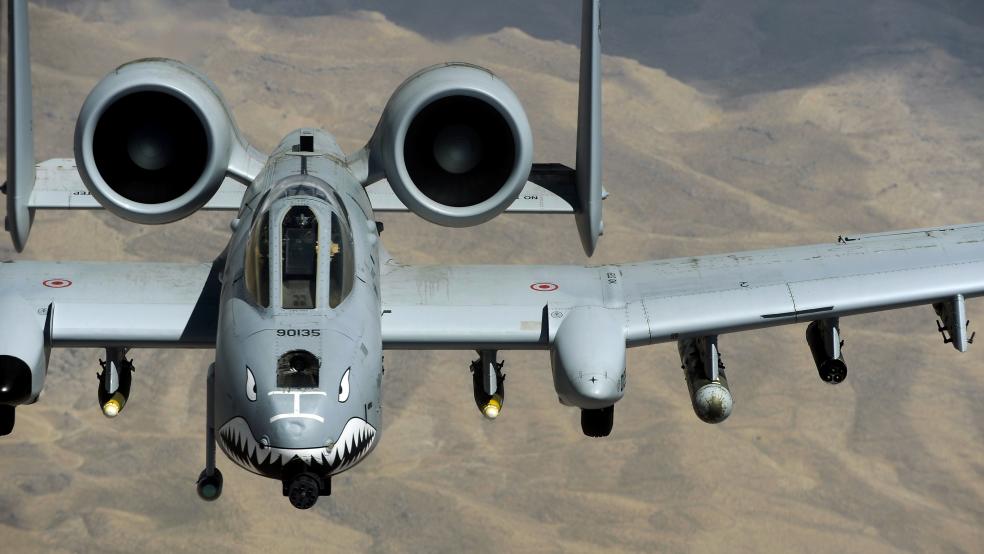Top U.S. Air Force generals are floating the idea of buying a new warplane to support ground troops better and more cheaply than the venerable A-10 Warthog.
In addition to its utility against militants and other light-to-medium forces, Air Force leaders hope this new close air support, or CAS, plane will help them win the fight to retire the A-10. And they are even beginning to envision an aircraft beyond that, in concepts variously known as the “arsenal plane” or “flying Coke machine.”
Related: 5 Attack Planes That Could Replace the A-10 Warthog
“I’d love to build a new CAS airplane right now while we still have the A-10 [and then] transition the A-10 community into the new CAS airplane,” Gen. Mark Welsh, the Air Force chief of staff, said Wednesday at a Defense Writers Group breakfast. “We just don’t have the money to do it and we don’t have the people to keep flying the A-10 and build a new airplane and bed it down.”
Welsh, who is retiring at the end of the month, said that the Air Force might seek a new aircraft design or adopt an existing one, depending how much money it wants to spend and how quickly it wants to move.
“We don’t think this would take that long to do and we don’t think it’s that complicated of a design problem,” he said.
The plane would not be meant for high-end combat, but a “low-to-medium-threat environment,” where it could fly low over the battlefield, bombing or strafing enemy forces without too much worry about advanced air defenses, Welsh said.
Related: Why the Air Force Will Keep the A-10 Warthog Flying – for Now
Compared to the A-10, Welsh envisions a new plane “that brings more firepower, that is more responsive” and is cheaper to fly. “We need something to keep doing, at much lower cost, the types of things we’re doing in the counterinsurgency fight today,” he said.
The A-10 costs between $19,000 and $20,000 per hour to fly. Welsh said he would like to see an aircraft that cost between $4,000 to $5,000 per hour.
Earlier this year, Lt. Gen. Mike Holmes, the deputy chief of staff for strategic plans and requirements, said officials are building requirements for this type of plane and trying to figure out if that could fit in the Air Force’s budget.
“The question is exactly where is the sweet spot…between what’s available now and what the optimum CAS replacement would be,” Holes said at an Air Force Association event. “We are working along that continuum to see exactly what the requirement is that we can afford and the numbers that we need to be able to do the mission.”
As the Pentagon fought a ground-focused, counterinsurgency in Afghanistan and Iraq over the past decade-plus, a small number of Air Force officers argued that the service should buy turboprop aircraft instead of jet fighters. These smaller, slower planes can can carry the same types of weapons as high-end fighters but linger far longer over a combat zone. The Air Force even launched a project to buy such planes, but those plans went away as the Pentagon set its sights on the Pacific and began gearing up for a high-end war with China.
If the idea of a fresh CAS design is rejected, potential candidates now on the market include the Embraer A-29 Super Tucano, Beechcraft AT-6, and Textron-Airland Scorpion. The Super Tucano and AT-6 are turboprops, the Scorpion a light jet.
This article originally appeared on DefenseOne. Read more from DefenseOne:
What the West Can Do about The Biggest Obstacle to Libyan Stability
A Transatlantic Plan to Bolster Europe’s Cyber Defenses
Air Force Says It Recovered Trove of Files in Corrupted Database




